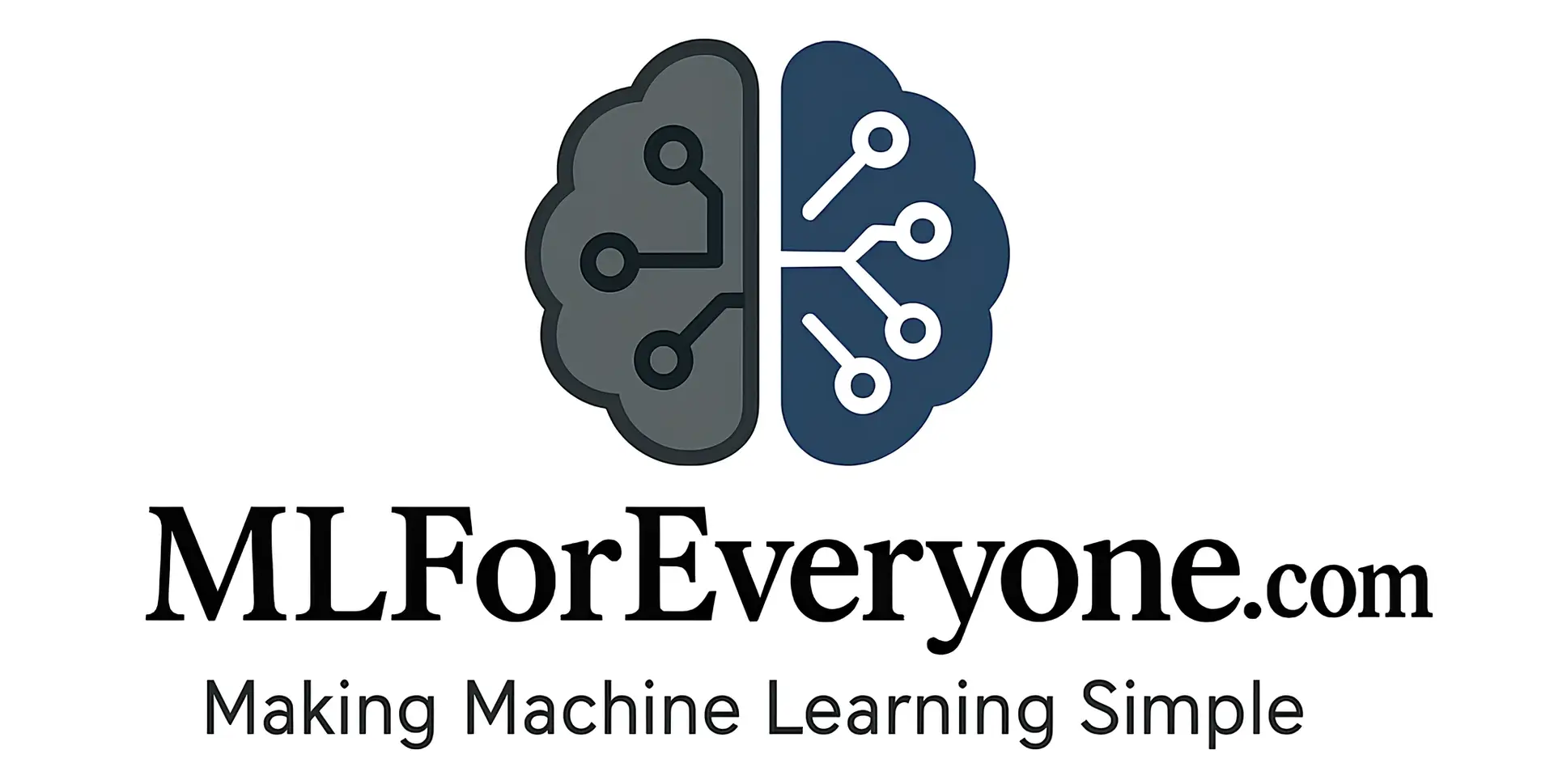Introduction
Linear regression is one of the simplest yet most powerful machine learning algorithms. It’s used to predict numerical values, like house prices or sales figures, based on input features. This guide explains linear regression in simple terms, dives into its mathematical foundations, and provides a step-by-step Python implementation.
What is Linear Regression?
Imagine you’re trying to predict someone’s house price based on its size. Linear regression finds a straight line that best fits the relationship between size (input) and price (output). For non-technical readers, think of it as drawing a line through a scatter plot to make predictions.
Key Concepts
- Dependent Variable: The value you want to predict (e.g., house price).
- Independent Variable: The input feature (e.g., house size).
- Slope and Intercept: Parameters defining the line’s position and angle.
Mathematical Foundations
For technical readers, linear regression models the relationship as: [ y = \beta_0 + \beta_1x + \epsilon ] Where:
- ( y ): Predicted value
- ( \beta_0 ): Intercept
- ( \beta_1 ): Slope
- ( x ): Input feature
- ( \epsilon ): Error term
The goal is to minimize the mean squared error (MSE) to find the best ( \beta_0 ) and ( \beta_1 ).
Step-by-Step Python Implementation
Let’s implement linear regression using Python with the Scikit-Learn library and a real dataset.
Step 1: Import Libraries
import numpy as np
import pandas as pd
import matplotlib.pyplot as plt
from sklearn.linear_model import LinearRegression
from sklearn.model_selection import train_test_split
from sklearn.metrics import mean_squared_error
Step 2: Load and Prepare Data
We’ll use a sample dataset of house sizes and prices.
# Sample data
data = pd.read_csv('house_prices.csv') # Replace with actual dataset
X = data[['size']].values # Feature: house size
y = data['price'].values # Target: house price
Step 3: Split Data
Split the data into training and testing sets.
X_train, X_test, y_train, y_test = train_test_split(X, y, test_size=0.2, random_state=42)
Step 4: Train the Model
Fit the linear regression model.
model = LinearRegression()
model.fit(X_train, y_train)
Step 5: Make Predictions
Predict prices for the test set.
y_pred = model.predict(X_test)
Step 6: Evaluate the Model
Calculate the MSE to assess performance.
mse = mean_squared_error(y_test, y_pred)
print(f'Mean Squared Error: {mse}')
Step 7: Visualize Results
Plot the regression line.
plt.scatter(X, y, color='blue', label='Data points')
plt.plot(X_test, y_pred, color='red', label='Regression line')
plt.xlabel('House Size (sq ft)')
plt.ylabel('Price ($)')
plt.legend()
plt.savefig('linear_regression.png')
Real-World Applications
Linear regression is used in finance (predicting stock prices), healthcare (estimating patient outcomes), and marketing (forecasting sales). For example, retailers use it to predict demand based on historical sales data.
Common Challenges
- Overfitting: When the model learns noise instead of patterns.
- Assumptions: Linear regression assumes a linear relationship, which may not always hold.
Advanced Topics
Explore ridge regression or lasso regression for handling multicollinearity or feature selection.
Conclusion
Linear regression is a foundational algorithm for machine learning. By following this guide, you’ve learned its theory and implemented it in Python. Try experimenting with different datasets to deepen your understanding!
Further Reading
- Scikit-Learn Documentation
- Stanford CS229: Machine Learning




Leave a Reply